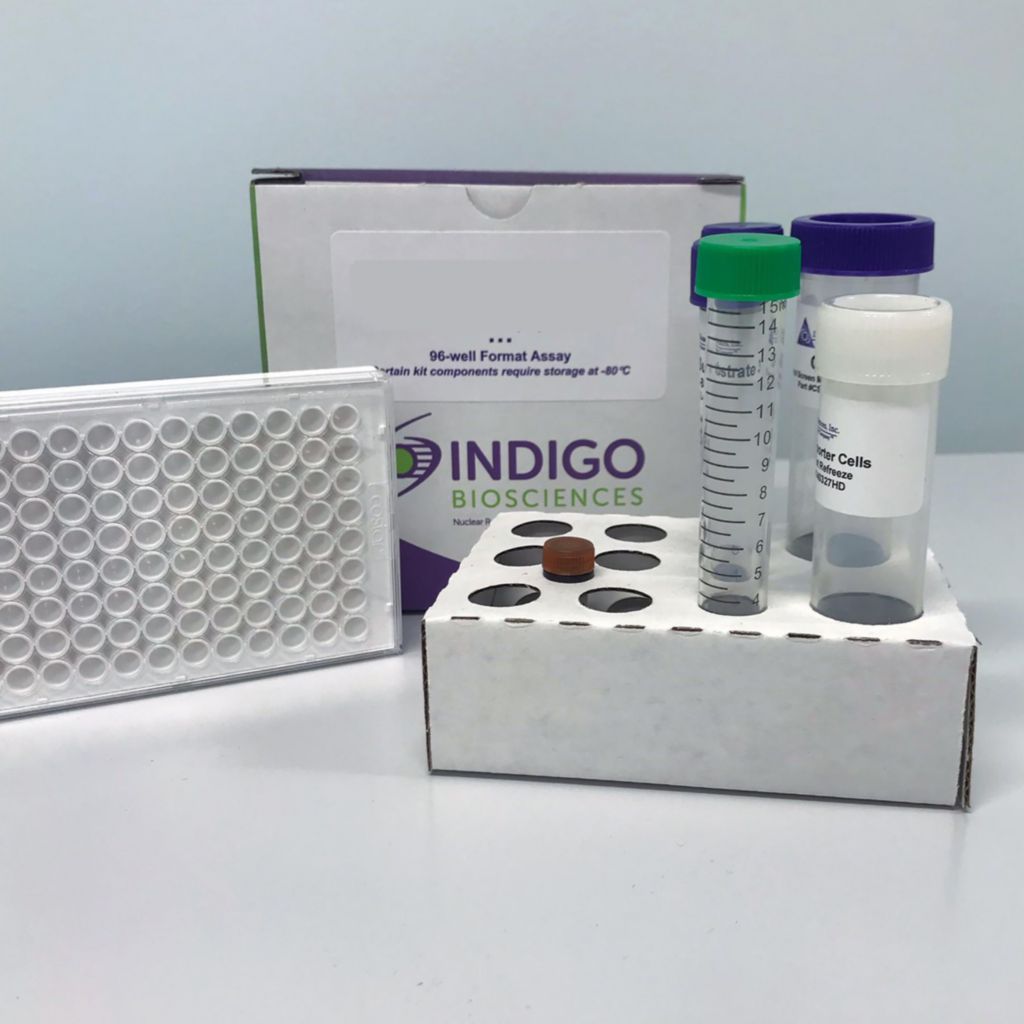Product Description and Product Data
This is an all-inclusive cell-based luciferase reporter assay kit targeting the Mouse Constitutive Androstane Receptor (mCAR). INDIGO’s mCAR reporter assay utilizes proprietary mammalian cells that have been engineered to provide constitutive expression of the mCAR. In addition to mCAR Reporter Cells, this kit provides two optimized media for use during cell culture and in diluting the user’s test samples, a reference agonist, Luciferase Detection Reagent, and a cell culture-ready assay plate. The principal application of this assay is in the screening of test samples to quantify any functional activity, either agonist or antagonist, that they may exert against mCAR. This kit provides researchers with clear, reproducible results, exceptional cell viability post-thaw, and consistent results lot to lot. Kits must be stored at -80C. Do not store in liquid nitrogen. Note: reporter cells cannot be refrozen or maintained in extended culture.
Features
Clear, Reproducible Results
- All-Inclusive Assay Systems
- Exceptional Cell Viability Post-Thaw
- Consistent Results Lot to Lot
Product Specifications
| Target Type | Nuclear Hormone Receptor, Nuclear Receptor Orthologs | ||
| Species | Mouse | ||
| Receptor Form | Hybrid | ||
| Assay Mode | Agonist, Antagonist | ||
| Kit Components |
| ||
| Shelf Life | 6 months | ||
| Shipping Requirements | Dry Ice | ||
| Storage temperature | -80C |
Data
Target Background
INDIGO’s Mouse Constitutive Androstane Receptor (nr1i3) Assay is a cell-based genetic reporter assay that utilizes proprietary mammalian cells engineered to provide constitutive, high-level expression of a ligand-dependent transcription factor commonly referred to as mCAR. These reporter cells utilize a modified version of mCAR in which the native N-terminal DNA binding domain (DBD) has been replaced with that of the GAL4-DBD. The mCAR ligand binding domain (LBD) is unaltered and fully functional. The reporter cells also incorporate a luciferase cDNA functionally linked to the GAL4-upstream activation sequence (UAS). Thus, quantifying expressed luciferase activity provides a sensitive surrogate measure of changes in mCAR activity resulting from direct interaction between a treatment compound and the nuclear receptor.
Because this assay system expresses the [GAL4-DBD + mCAR LBD] hybrid receptor, the activity of modulators that act through indirect mechanisms (such as those that alter the phosphorylation status of the native N-terminal amino acid sequence of the CARs) may be dampened or go undetected.
Contrary to its name, mouse CAR is not constitutively active, rather, it exhibits ligand-dependent activation. The primary application of this reporter assay system is in the screening of test compounds to quantify any functional activity, either agonist or antagonist, that they may exert on mouse CAR.
Citations
Also available as a service
